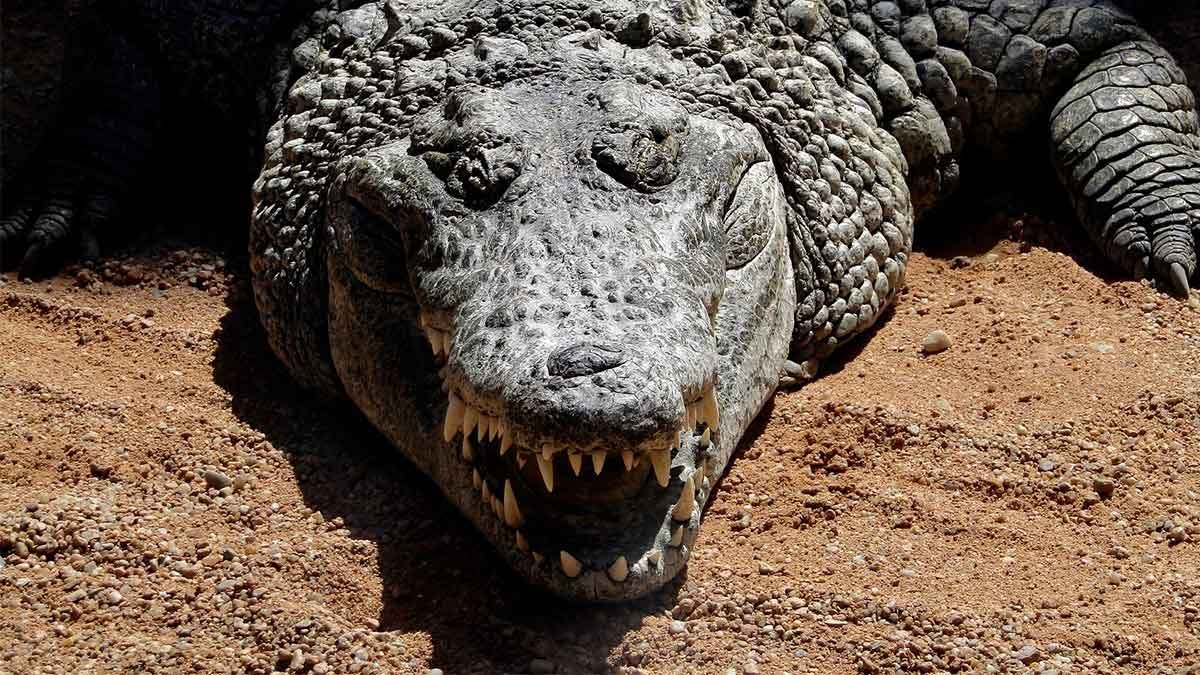Most people are afraid of spiders and snakes and of course larger predators. So it makes sense to view Crocodilian Species (ie live crocodiles, alligators, caimans, mares, etc.) with suspicion. Although many of their ancestors were more vicious than their current forms, half of the planet’s 23 living species of crocodiles are considered dangerous to humans.
The International Union for Conservation of Nature (IUCN), best known for its Red List that defines the conservation status of various species, suggests that crocodiles attack humans for four reasons:
- They are hungry,
- They are defending their territory,
- They are defending their young, or
- They intend to attack another species — such as a dog, cat, or Another pet—that just happened to be near a person.
The list below provides a list of some of the most aggressive Crocodilian species.
Black Caiman (Melanosuchus niger)
The black caiman lives in northern South America and can be found throughout much of the Amazon River, from Peru and Ecuador eastward to Guyana and Suriname. Black caimans have a broad diet, feeding on fish and other reptiles, as well as rodents such as capybaras (which can grow up to 4 feet long and 1.25 meters). Adult male black caimans are often over 13 feet (about 4 meters) long. Large specimens have been known to attack people.
The Worldwide Crocodile Attack Database (CrocBITE), affiliated with Charles Darwin University in Australia, notes that between January 2008 and October 2013, black people were involved in 43 attacks, and less than a fifth of them. were fatal.
Read More About: Fish Species
Mugger Crocodile (Crocodylus palustris)
The alligator, or swamp crocodile, can be found in freshwater ponds, wetlands, lakes, and slow-moving rivers from Iran to the west coast of Southeast Asia. It is easily recognized by its broad flat snout. Among the largest crocodile species in terms of body size, but can grow to 13 to 16.5 feet (about 4 to 5 meters) as adults. Although they feed on fish and reptiles, some have also fed on larger prey such as deer. According to CrocBITE, robbers attacked 110 people between 2008 and 2013, with nearly a third of the victims dying.
American Crocodile (Crocodylus acutus)
The American alligator, also known as the Central American alligator, inhabits a wide range of aquatic habitats from southern Florida and Mexico south through the Caribbean Islands and Central America to northern South America. It is no stranger to saline environments, having been seen in saltwater estuaries. Adult males grow to about 16.5 feet (about 5 meters) in length.
American alligators prefer small vertebrates as prey, but reports of attacks on people are not uncommon. CrocBITE notes that 90 people were attacked between 2008 and 2013, resulting in nearly 20 deaths.
Gharial (Gavialis gangeticus)
Gharial, or Gavial, inhabits the rivers of northern India and Nepal. It is distinguished by its long and very thin jaws with sharp teeth, which it uses as its main prey for catching fish. The gharial usually reaches a length of about 12 to 15 feet (3.7 to 4.6 m). It does not attack humans but feeds on corpses during cremations on the Ganges River.
American Alligator (Alligator mississippiensis)
American alligators (or “gators”) are native to the Gulf Coast region of the United States and are found in freshwater environments ranging from lakes and streams to marshes, swamps, and other wetlands. However, some have been observed in saline habitats such as mangrove swamps. Most alligators are smaller than their alligator cousins, with adult males typically growing between 13 and 15 feet (4 and 4.5 m).
Between 2000 and 2007, fish strikes in Florida averaged fewer than 11 per year, although the fatality rate from these strikes was less than 10 percent. Between 1948 and 2005, wildlife officials documented 379 crocodile attacks on people, resulting in 17 deaths. Interestingly, they also noted that most of these incidents did not start with the crocodile, but with people trying to pick up, hold, or otherwise handle the animal.
Saltwater Crocodile (Crocodylus porosus)
The saltwater crocodile (also called the estuarine crocodile, or “salty”) lives primarily in Southeast Asia, from southern India to the northern tip of Australia. Despite their name, saltwater crocodiles are not exclusive to saltwater habitats. They are also found in brackish waters and freshwater streams and marshes. Fully grown males can reach over 20 feet (about 6 meters) in length and weigh more than 1,100 pounds (about 500 kilograms).
Considering records from Australia and Malaysia alone, the IUCN reports that between 2000 and 2007, saltwater crocodiles were responsible for nearly 30 separate attacks on people. A quarter of these attacks in Australia were fatal. Half of the attacks in Malaysia resulted in the death of the victims.
Nile Crocodile (Crocodylus niloticus)
With a geographic home range spanning most of Africa save parts of the Sahara and Madagascar, the Nile crocodile is at home in a variety of habitats consisting of freshwater lakes and rivers, and saltwater. Although adults vary in size, most reach a length of 16.5 to about 20 feet (about 5 to 6 meters). This species easily claims the title of the most dangerous crocodile, as it is widely believed to be responsible for over 300 attacks on people annually.
